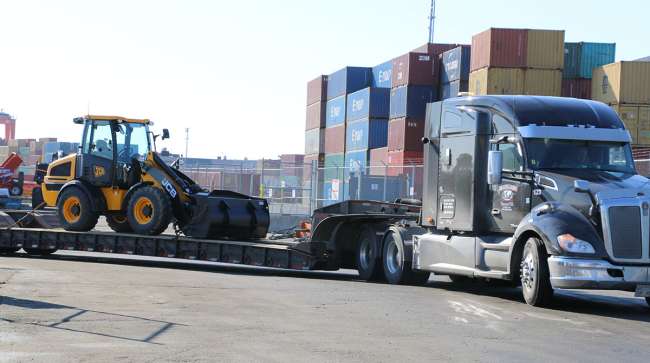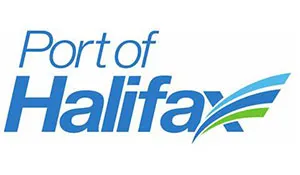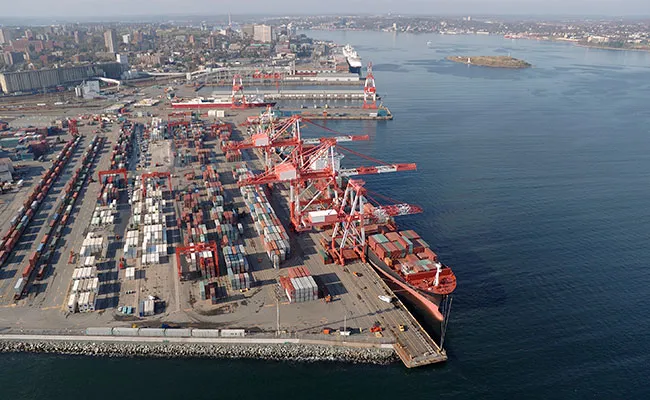Staff Reporter
Port of Halifax to Create Digital Data Hub

[Stay on top of transportation news: Get TTNews in your inbox.]
Supply chain improvements for trucking are underway at the Port of Halifax in Nova Scotia in a multimillion-dollar venture to create a data hub and digitize container terminal operations.
“The Halifax Port Authority is working collaboratively with PSA Halifax, the container terminal operator here, Canadian National Railway Co., our rail partner, and the ILA [labor union] workforce at the port for better outcomes for our customers and stakeholders. These projects are good examples of that collaboration,” Lori MacLean, port senior communications manager, told Transport Topics.
Halifax is a key gateway port serving customers locally and in other parts of North America, including the U.S. Midwest and central Canada. Last year, the port’s top Canadian exports were consumer items, paper/forest products, plastics, wood pulp and vehicle/auto parts.
Cargo is the most significant line of business at the port. In 2023, containerized throughput of 546,163 20-foot equivalent units was in line with average annual cargo volume during the past five years. However, 2022 saw a record 601,700 TEUs moved through the port.

The first supply chain project targeted for completion is the Halifax Port Authority’s data integration hub. The objective is to create new supply chain efficiencies by using advanced data analytics to integrate information from trucking, marine and rail operations.
The cost is estimated to be C$2.5 million ($1.85 million). The federal government provided a C$1 million grant from Transport Canada’s National Trade Corridors Funding based on a request from the port, Canadian National Railway and PSA Halifax. The project is slated to be finished by the end of April 2026.
Key aspects of the data integration hub are to develop three 24/7-accessible real-time business intelligence dashboards to track vessel turnaround, container movements and truck scheduling, and rail shuttle operations.
In 2022, the port’s impact on the province of Nova Scotia was C$4.87 billion, which generated C$2.5 billion in gross domestic product, C$1.6 billion in labor income and more than 25,300 jobs, MacLean said.

Containerized throughput of 546,163 TEUs in 2023 was in line with average annual cargo volume during the past five years. (RyersonClark/Getty Images)
“Approximately 65% of the port’s container volumes are destined for, or originate from, the U.S. Midwest and central Canada. Freight to and from these locations generally arrives to the port by rail,” she added.
“Top imports include clothing, machinery/equipment, consumer products, furniture and iron/steel products,” MacLean said. “We have congestion-free cargo, bulk and roll-on/roll-off operations and facilities, with convenient connections linking Halifax to North America’s highway network.”
The second project is PSA Halifax’s container terminals digitization project to develop technology and software that will improve the flow and handling of containers. Completion is scheduled for Dec. 31, 2026.
Transtex CEO Mathieu Boivin discusses the environmental sustainability of auxiliary power units. Tune in above or by going to RoadSigns.ttnews.com.
“The project will enhance the sharing of relevant data and improve the efficiency of port operations through the implementation of modern systems and tools, including truck appointment systems to drive improvements in daily operational efficiency, resiliency and fluidity of container traffic,” MacLean said.
PSA Halifax is receiving C$3.7 million from NTCF to implement new terminal operating systems, truck appointment systems, rail optical character recognition portals and remote refrigerated monitoring systems.
Both projects will integrate within the port’s Joint Operations Centre, created two years ago to better synchronize marine, terminal and rail operations in Halifax.
“Cargo operations are busy at the Port of Halifax. Trucks travel through the downtown core of our city to pick up or drop off their local cargo,” MacLean said. “And trucks pick up and drop off cargo for the port from other parts of the maritime region [the provinces of Nova Scotia, New Brunswick and Prince Edward Island]. Local and regional imports and exports generally arrive to the port by truck.”
The Port of Halifax connects to more than 150 countries on four continents.
Want more news? Listen to today's daily briefing below or go here for more info:





